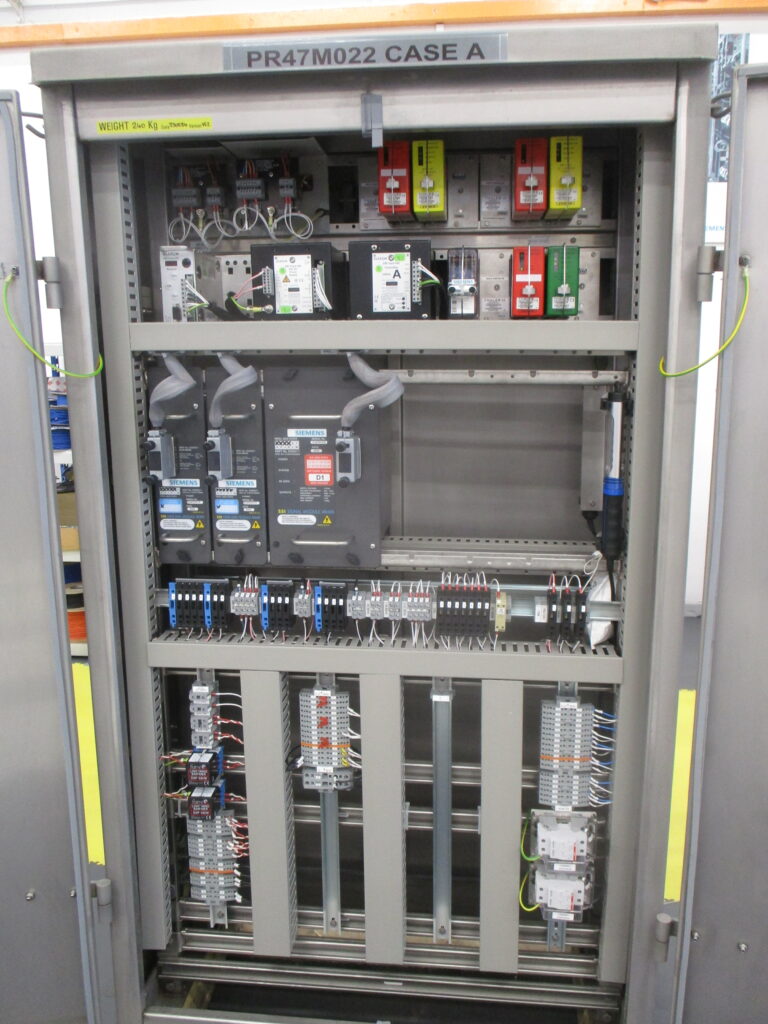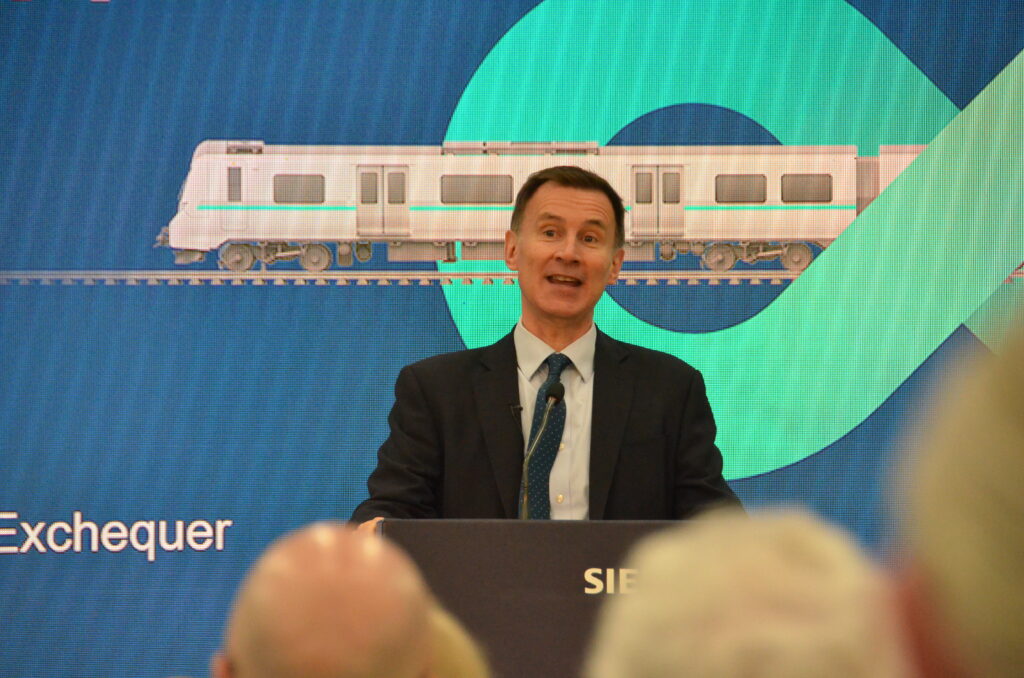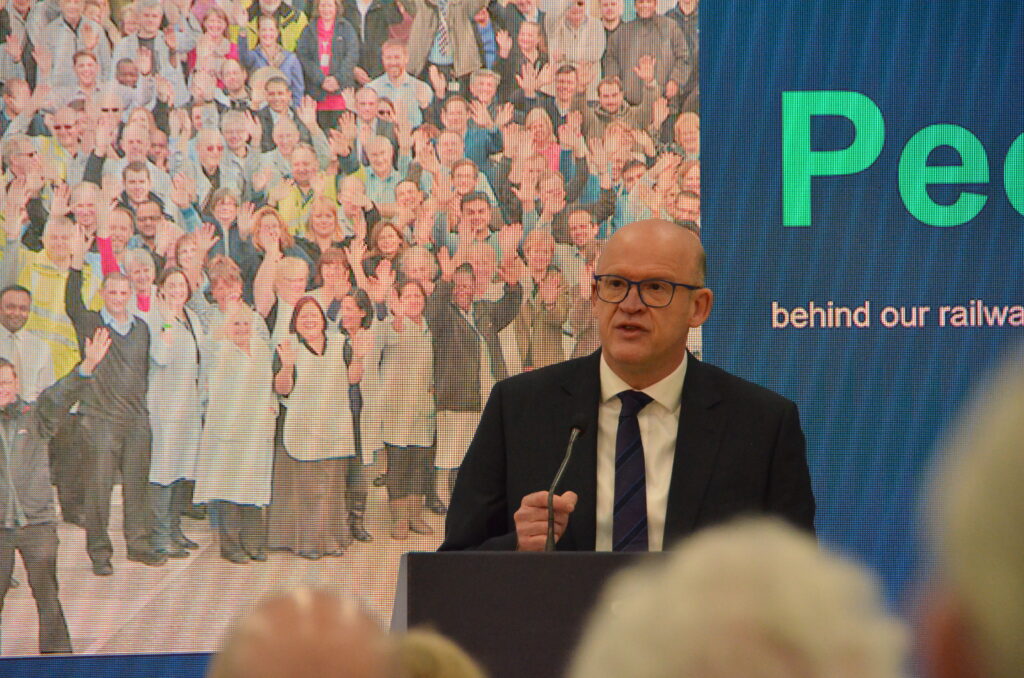The recent announcement by Siemens Mobility to invest £100 million in the building of new premises in Chippenham was well received and duly reported by press releases on 4 March. Some of us were lucky to be invited to the associated press conference where the guest of honour was Chancellor of the Exchequer Jeremy Hunt. The press briefing gave details of what will be entailed but behind the scenes, the rail magazines were given the opportunity to probe deeper into the decision making behind the investment and the plans for Siemens Mobility’s future in the rail signalling business.
A brief history
Those of us who have been in the railway signalling business for decades will associate Chippenham with the Westinghouse Brake and Signal Company. The origins go back much further than that. It was in 1856 that Saxby began to design and build signalling systems and equipment, and, in 1897, Saxby & Farmer opened a factory in Chippenham to meet the growing demand for signalling both in the UK and across the empire. In 1935, Westinghouse took control and continued to expand the site until the mid-Twentieth century.
Eventually, Westinghouse was acquired by Hawker Siddeley in 1979 which was then then bought by BTR in 1992. Shortly after this, BTR merged with Siebe and became Invensys, continuing the signalling operation until finally Siemens acquired the business in 2013 to merge it with its signalling interests in Germany and other locations in Europe.
Some notable developments emanated from the site down the years, notably the London Underground Victoria Line automatic train control system in 1968 and participation in the development of solid state interlocking of which the first example was introduced at Leamington Spa in 1985. The Victoria Line system was replaced with a ‘distance to go’ radio based ATO system in 2012, which has performed very well since then. This pedigree of expertise was recognised by the German company, which made the site the leader of signalling development for both the UK and the wider market.

Siemens has been in Britain since 1900 where it was instrumental in introducing the first submarine cable link between England and India, then on to laying cables across the Atlantic. The company regards Britain as its second home and has many premises in the UK other than railway signalling. Another important part of Siemens is the factory at Poole where it designed the train mobile radio for GSM-R, although manufacture of the radios has now transferred to Chippenham. Radio communication is an essential element of the ERTMS progression.
Siemens is well established in the rolling stock business and its recently-opened factory in Goole will be manufacturing the new trains for London Underground’s Piccadilly Line. Many other trains in the UK have been provided by Siemens including the Thameslink Class 700, the GN Inner Suburban Class 717, and the main line fleet for South Western Railway, and 587 of the trains supplied are maintained by Siemens depots around the country. Altogether, Siemens employs 5,500 people in the UK.
Existing Chippenham site
The expansion of the signalling business over the years led to a piecemeal development of the premises just on the north side of Chippenham railway station. It had its own rail sidings for many years and had several buildings geared to designing and manufacturing the signalling equipment of the time. It also had its own foundry to cast metal for the many structures and mechanical components as part of the signalling portfolio. The foundry no longer exists and is now only a pile of rubble.
Whilst the headquarters block remains, together with some factory units suitably adapted for the emerging signalling technology, some of the old buildings are in a derelict or semi derelict condition. This does not present the image of a modern-day signalling company, hence the need for new premises. Some of the land nearest to the railway has already been developed into a retail park and the entire site (which Siemens does not own) will be used to develop housing and other local amenity facilities.
The new site
The new factory and laboratories will be on greenfield land on the south side of Chippenham in the SouthPoint business park. Planning consent is at an advanced stage and the new premises are expected to open in 2026. The new building will incorporate all the latest sustainability standards promoting environmental and socially responsible structures.
As well as accommodating the office-based staff, there will be manufacturing, design, project engineering and research & development (R&D) facilities. Of the 800 staff who will transfer to the new site, 160 of these will be associated with R&D (there are a total of 300 staff working on R&D for signalling across the various Siemens UK companies). The aim is to have a seamless move so as not to disrupt design and production for the various signalling projects that the company has orders for. The skill sets that have been built up over the years are considerable, hence the decision to remain in Chippenham. It is intended that the research and manufacturing units will be the most modern of their kind in the whole world.
Presenting the opportunities
In the announcements made at the press briefing and subsequent interview sessions, Jeremy Hunt remarked that the government will back this plan as it is seen as a revival of manufacturing in the UK. The country must become a global leader of industry based upon technology. Manufacturing is 10% of the UK economy and this must grow. Artificial Intelligence, Life Sciences (medicines and vaccines), Film and TV, Automotive, Aerospace, and Railways, are all part of this growth plan. Emphasis must also be put on export. The old model of R&D in the UK but with manufacturing elsewhere in the world, is no longer acceptable. There is a need to shake off the negativity that so often prevails and restore our self-belief, he said. Tax reliefs of up to 25% will be there to encourage this objective.

Rob Morris, the joint CEO of Siemens Mobility, observed that much of the UK’s signalling infrastructure is approaching the end of its economic life. Some notable recent projects have included the CBTC on the centre section of the Elizabeth Line, the re-signalling at Birmingham New Street, the Core Valleys upgrade in South Wales and the ongoing East Coast Digital Programme (ECDP).
In the immediate future, contracts are in place for the work in mid-Cornwall to replace old mechanical signalboxes and the reopening of the Northumberland Line to Ashington. However, much more needs to be done and a long-term strategy has to evolve if the boom-and-bust type of business is to be avoided. The announcement of a five-year renewal programme for signalling will help this.
The ongoing Siemens Mobility product line will include both the deployment of ETCS and the continuance of modular signalling systems that have helped to reduce costs for secondary routes. The roll out of ETCS in the UK remains painfully slow, and even the much-publicised ECDP only covers from London to just short of Grantham, which is about a quarter of the entire route.
The company is well aware that the radio bearer for ETCS, which is currently GSM-R and obsolete in terms of its technology, has to be renewed in the next 5-10 years. The successor will be FRMCS based on 5G technology and Siemens intends to participate in that renewal once the business intent is made known. Another innovation is the possibility of cloud based interlockings where interlockings from different manufacturers can be remotely accessed to improve flexibility and reduction in cost. The existing Siemens interlocking types Westrace and Westlock will remain in production for both UK projects and others in the wider world.
Chippenham will work alongside the sister Siemens Mobility company in Braunschweig which has around 4,000 employees engaged on projects in Europe and around the world. €60 million has been invested here over the past five years. The Chippenham site already manufactures relays for Germany.

A nice touch to enhance the proceedings was to have Yasmin Rawle, a Strategy and Business Development graduate, tell of her involvement inside the company which goes back to four generations of her family. Employing graduates and apprentices will continue in increasing numbers once the new site is opened.
A final comment from Andrew Haines, the chief executive of Network Rail, emphasised the importance of rail growth in the UK where £43 billion is allocated to rail investment over the next four-year period of which re-signalling will be a significant element of this. Small and medium enterprises are predicted to be 50% of the suppliers to Siemens in the ongoing signalling modernisation.
The future beckons
The news of Siemens Mobility’s investment has been well received by the local community, the signalling industry and, perhaps more importantly, existing employees. It ensures that a major contributor to signalling design and manufacture will remain in the UK, both to serve the home market of main line and metro operation as well as opening up new opportunities for export.
Whilst a few may shed a tear when the old site finally closes, it is no longer fit for purpose and it is time to move on. Rail Engineer will continue to keep in touch and report on progress with the new facilities as the building work gets underway.
Lead image credit: Siemens Mobility UK

